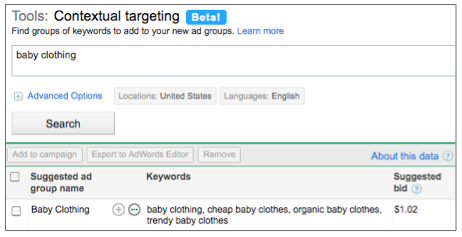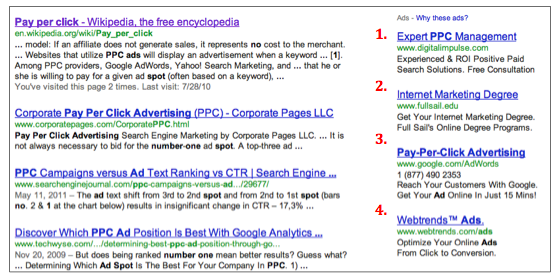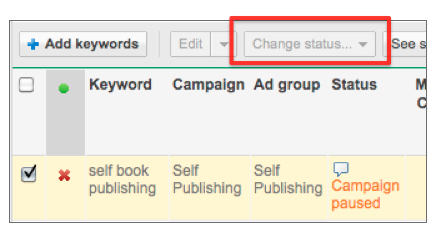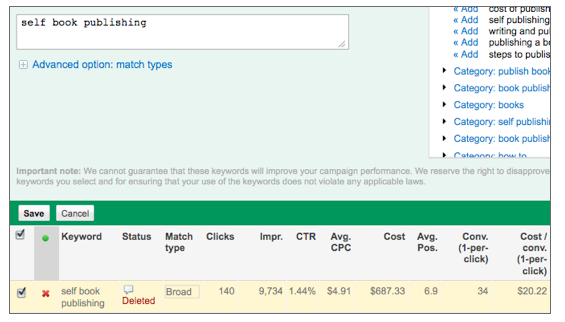4 PPC Misconceptions of AdWords Keywords

Have you ever gone on thinking something was correct, telling it to others, only to realize later that what you whole-heartedly believed in well, wasn’t. Like when I would sing along with Bill Withers “Give Me the Beach Boys” or purchased the Reading (pronounced reeding) railroad in Monopoly.
I’ve come across a lot of situations like this in PPC, where I had misconceptions about what was and wasn’t, and when I was told otherwise it blew my mind. I wanted to share four PPC misconceptions about keywords with you, so you aren’t the one going around the office singing “give me the beach boys and free my soul.”
Misconception 1: You can’t use keyword-level destination URLs on the Display Network.
We all know the Display Network doesn’t show stats for individual keywords. Instead, it uses the keywords in an ad group to identify a theme and combines this along with your ad copy and landing pages to determine where to show your ads. This is why you can only see stats at the ad or ad group levels.
Because of this, I was taught that there’s no point to having destination URLs for keywords because the Display Network doesn’t recognize individual keywords. Makes sense right? This idea is even backed up by Google itself by a blog post back in 2007. Take a look at one of their tips for the content network:
Now this post is over 4 years old so it’s possible this was true at the time as everything on the Internet changes rapidly. However it still ranks high in SERPs and likely continues to perpetuate this misconception. The truth is, you can have keyword-level URLs on the Display Network and they do serve a purpose.
You can put Display campaign destination URLs at the keyword, ad, and managed placement level. The order of priority for Google is managed placement > keyword > ad. If you don’t have a managed placement URL it triggers the keyword level, if there’s no keyword level it triggers the ad level.
How do these keyword destination URLs work? If someone clicks on a Display ad, Google will determine which keyword best matches the content on that site and use that keyword’s destination URL. Take a look at the example below of a suggested Display Network ad group for baby clothing generated from Google’s contextual targeting tool.
You could just have ad level URLs pointing to the main baby clothing page, but you could get even more granular with keyword level URLs. For “cheap baby clothes”, you could direct people to your clearance page; for “organic baby clothes”, the organic section; for “trendy baby clothes”, your newest arrivals page. You see where I’m going.
Now I’ll admit, I haven’t fully utilized keyword-level destination URLs in my Display Network campaigns, but it’s definitely something I will be testing out and blog about in the future.
Misconception 2: An average position of 1 means you are showing in the top spot above the organic results.
Ah position 1. First listing on the page, above the organic results, site links galore!. If you see your keywords are showing in an average position of 1 it means you are showing in the top spot on the page right? Wrong.
If there are no ads showing above search results and your ad appears on the right hand side as the 1st one, then that would mean the 1st rank. If there are no ads above the search results or on the right hand side, but the advertiser’s ads show up under the search results, then too the position would be 1st rank.
To illustrate this, below is an example of ad position with ads above the organic listing…
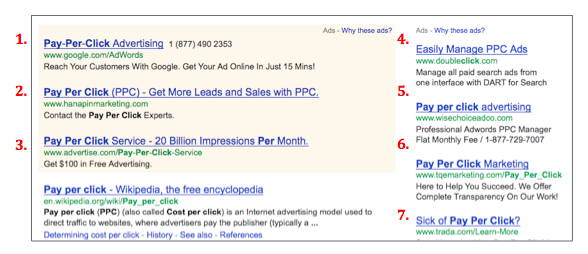 … and the ad positions without ads in the top spot.
… and the ad positions without ads in the top spot.
What was the 4th position in the first example, now becomes position 1 when no ads are showing at the top. Position 1 is what will be reported in AdWords for the Digital Impulse ad.
So take average position with a grain of salt, as position 1,2,3,4, etc. don’t necessarily mean the same spot on the page.
Misconception 3: Once you delete a keyword, it looses its account history and you cannot reactivate it.
I have a problem with getting rid of things. Now, you won’t see me on an episode of hoarders, but my apartment is full of things I haven’t used in months or years. I’m afraid that as soon as I get rid of something I’ll figure out a use for it.
The same thing can happen in a PPC account. You hold on to keywords that haven’t ever performed well because maybe, just maybe, one day they will. On top of that, I was told that once your delete a keyword you can’t reactivate it, and that’s sort of true.
You can see below, that when you select a deleted keyword the “Change status” box grays out and you can’t change the status.
However, if you deleted a keyword from an ad group and try to add it back into the ad group, look what happens:
When you click save, the keyword is active again and still maintains the performance history it had before it was deleted.
Now, I don’t recommend deleting keywords if you think there’s a reasonable chance you’ll want to reactivate them in the same ad group, but if you’re holding on to poor performing keywords because you are afraid that as soon as you delete them you’ll want to activate them again, don’t worry.
Misconception 4: When you add a new keyword into your account its Quality Score reflects how well it’s performing in your account.
When you add a new keyword into your account, AdWords automatically assigns it a Quality Score. This QS is based on the keyword’s historic performance on Google.com until it achieves a significant number of impressions in your account (according to Google, significant means a high number somewhere in the multiple of thousands). This is referred to as the impression threshold.
Once the keyword receives significant impressions, its QS will start to reflect how it’s performed in your account, and historic performance will be a lesser factor. This is important if you have a lot of keywords in your account that have very low impressions: these keywords will not be evaluated based on their own QS in the account. Until keywords reach the impression threshold, there’s little that can be done to influence their QS.
______________
These are just four of the PPC misconceptions I’ve come across while working in the industry but I’m sure there are many others. If you know of any PPC misconceptions please post them below!



